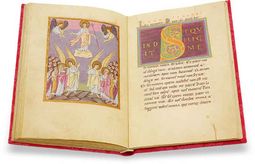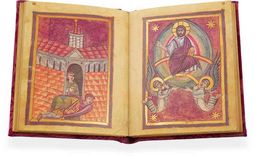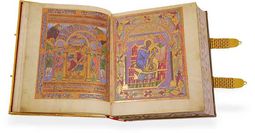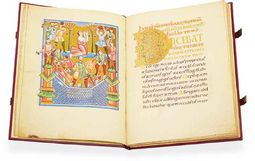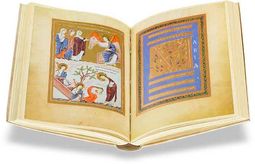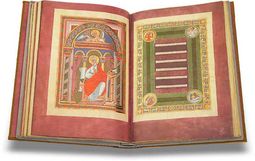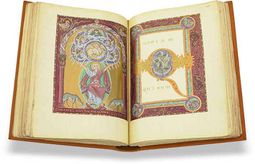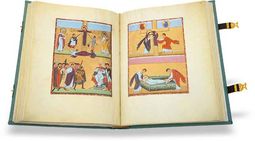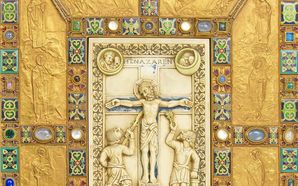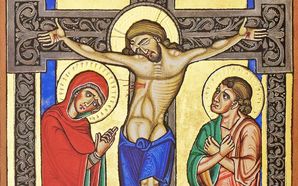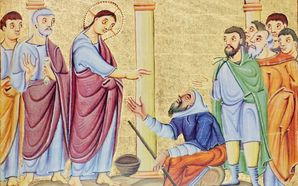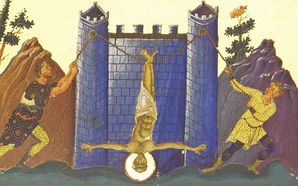Ottonian Illumination
The Ottonian Renaissance produced some of the greatest, most lavishly adorned and bound masterpieces of the entire Middle Ages. It was a rich but relatively short-lived renaissance associated with the Ottonian dynasty (919-1024), but which outlived them, gradually evolving into the German Romanesque.
Originating from only a few monasteries with incredibly talented scribes and illuminators, these manuscripts were primarily created for members of the Ottonian dynasty, some were commissioned by them as gifts, while others were made by monastic communities for their own use or were commissioned by a bishop for use in a cathedral. Stylistically, Ottonian manuscripts built on Carolingian traditions and consciously sought to imitate Late Antique and Byzantine artistic traditions. Ottonian Illumination is characterized by rich materials like Byzantine-style burnished gold backgrounds, gold and silver ink, and rich, flat colors from exotic materials.
Its compositions appear static, often relying on expressive glances and gestures with elongated fingers. This grand, monumental style of illumination was an expression of a renewed belief in the Holy Roman Empire, and a desire to be seen as equals by the Byzantines. Thus, splendid codices from that time were also used as political statements, and in their paintings the Ottonian kings and emperors had themselves crowned by God.
Demonstration of a Sample Page
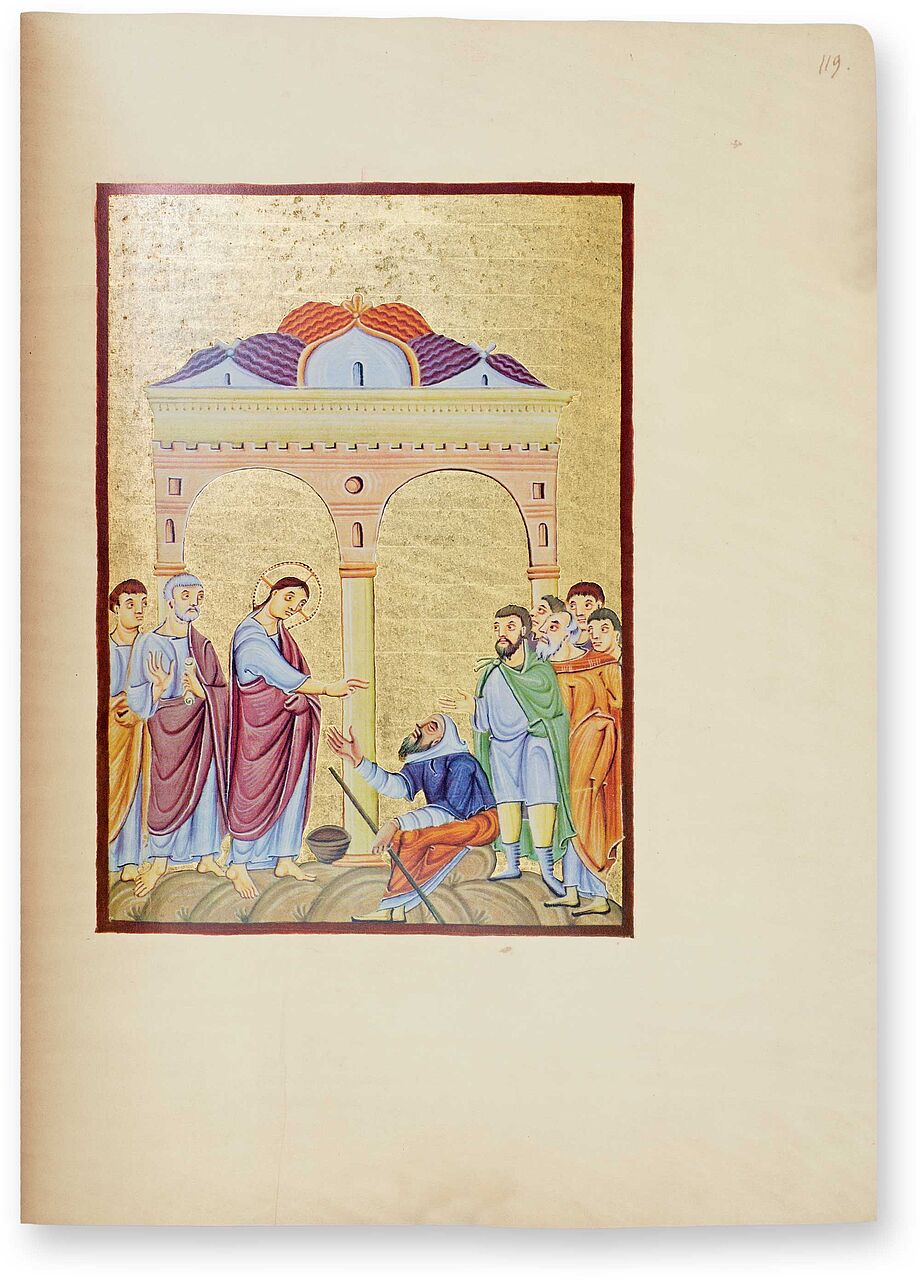
The Gospels of Otto III
Patron Portrait of Otto III
This brightly-colored double-page miniature is a masterpiece of Ottonian illumination and a famous representation of the power of the Holy Roman Empire. The artists of Reichenau’s scriptorium drew from Byzantine and Carolingian examples, both of which were firmly rooted in the style of Late Antiquity. Thus, Otto is formidably presented in the purple robes of a Roman emperor.
Otto is enthroned with the imperial crown, orb, and eagle scepter of Augustus. He is flanked by clerics to the left and noble knights to the right. Four personifications representing the peoples of the empire – Sclavinia, Germania, Gallia, and Roma – humbly approach with gifts consisting of a shell filled with gems, a palm branch, a cornucopia, and a golden globe.

